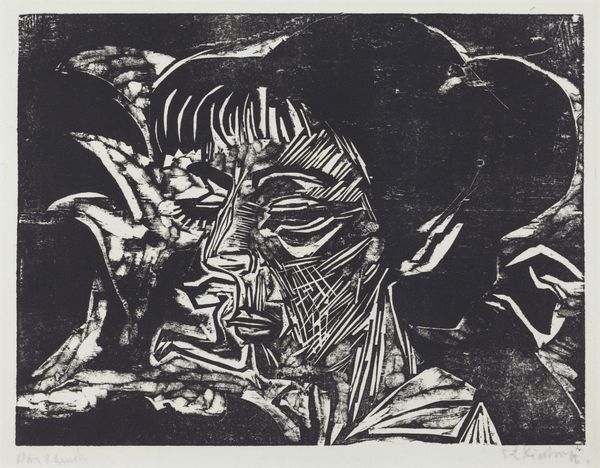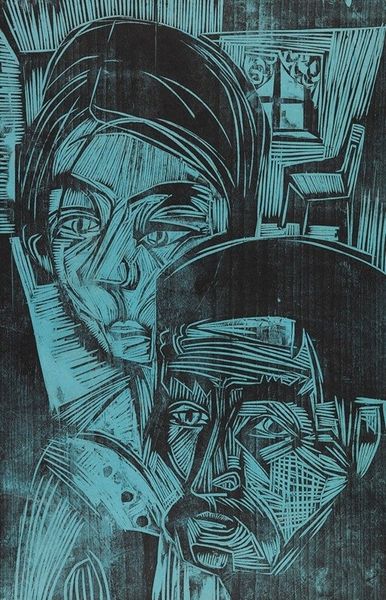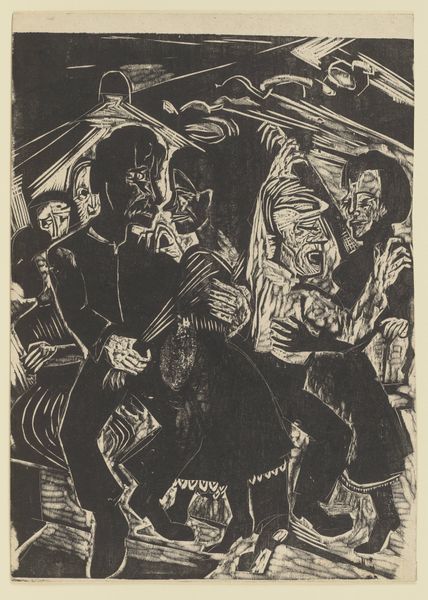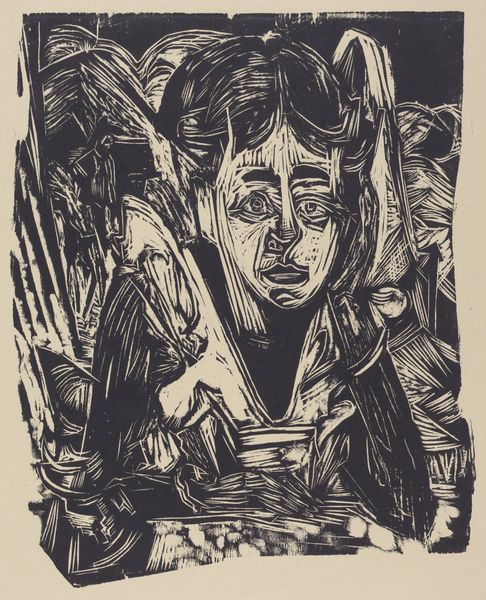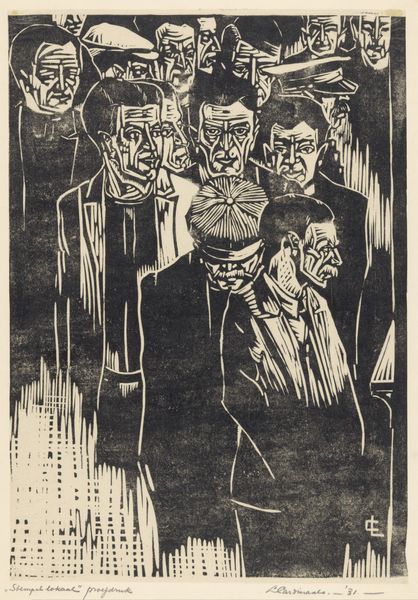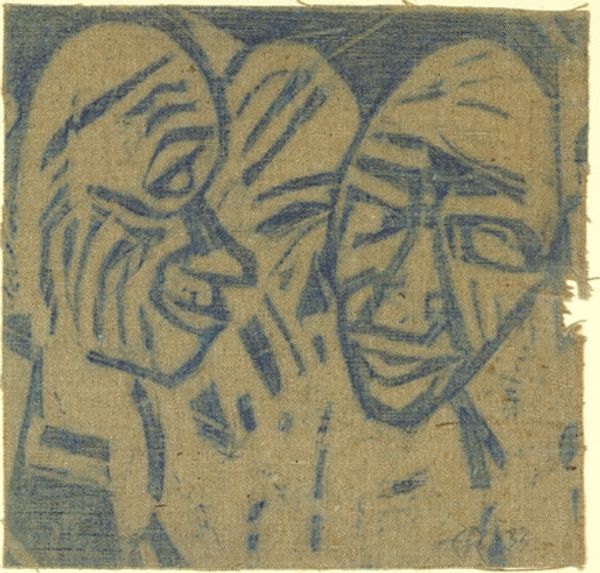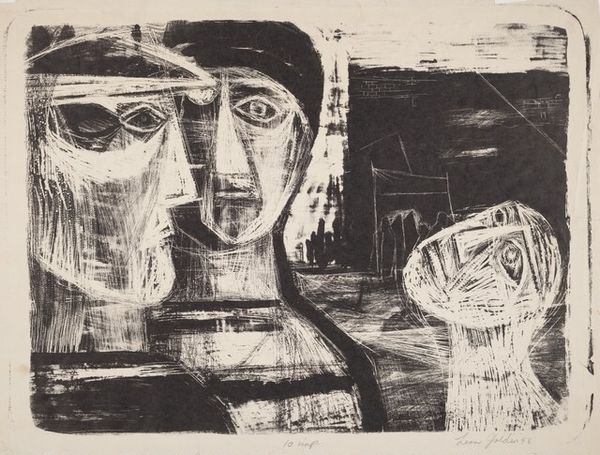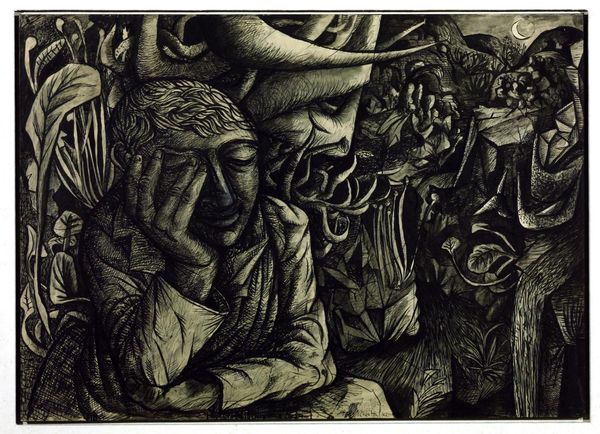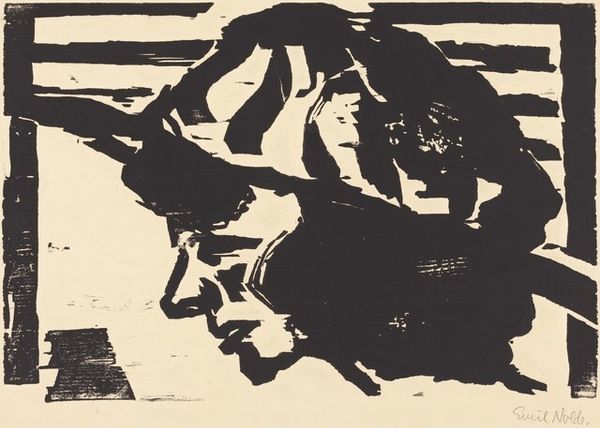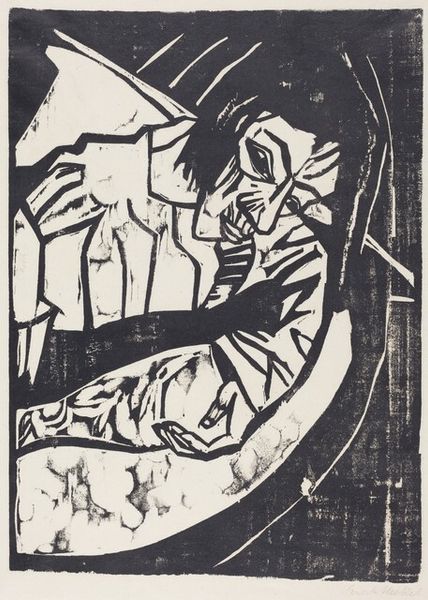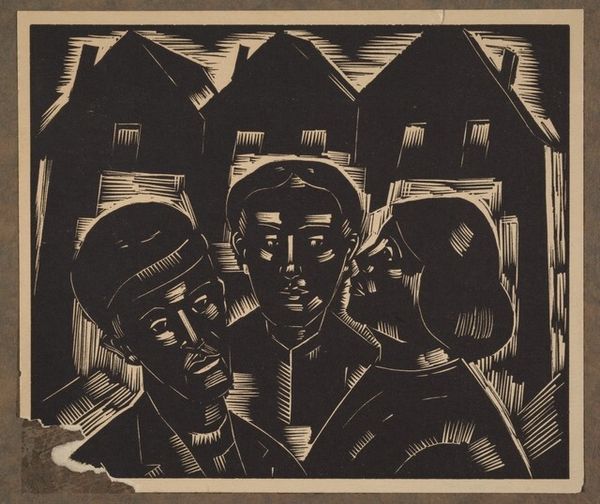
print, woodcut
#
portrait
#
narrative-art
# print
#
caricature
#
german-expressionism
#
figuration
#
expressionism
#
woodcut
#
history-painting
Dimensions: image: 35 x 42.5 cm (13 3/4 x 16 3/4 in.) sheet: 43.3 x 55.3 cm (17 1/16 x 21 3/4 in.)
Copyright: National Gallery of Art: CC0 1.0
Editor: Here we have Ernst Ludwig Kirchner's woodcut, "The Married Couple Müller," created in 1919. The stark black and white, combined with the angular, almost grotesque, rendering of the figures, gives the piece a distinctly unsettling vibe. What can you tell me about Kirchner’s intentions here? Curator: It’s unsettling, yes, and I think deliberately so. Consider the context: this was produced in the immediate aftermath of World War I. Kirchner, like many German Expressionists, used art to grapple with the trauma of war and the societal anxieties of the Weimar Republic. Do you see how the distorted features and harsh lines can be interpreted as a commentary on the psychological toll of war on individuals and relationships? Editor: Absolutely. There's a real sense of alienation. The couple is physically close, yet emotionally distant. They seem trapped. Is that intentional, would you say, a representation of how relationships suffered? Curator: Precisely. Think about the power structures at play within marriage and society at the time. This image might also suggest the societal constraints placed upon women and the pressures faced by men returning from war to re-establish their roles. The lack of softness in the rendering speaks volumes. Can we interpret the medium itself - the rough woodcut - as mirroring the fractured state of society? Editor: That's a really interesting point. I hadn't thought about how the choice of woodcut adds to the overall sense of unease. So, Kirchner isn’t just showing us a portrait; he is presenting a critique of the social and psychological landscape. Curator: Exactly. This piece invites us to examine not just the relationship between these two individuals, but also the larger cultural context that shaped their lives and the artist's perspective. It’s a powerful statement about the human cost of conflict. Editor: This really sheds new light on the piece, looking at not only the aesthetic decisions, but how it all fits into historical and social issues, gives this a new meaning. Thanks for your insights.
Comments
No comments
Be the first to comment and join the conversation on the ultimate creative platform.
